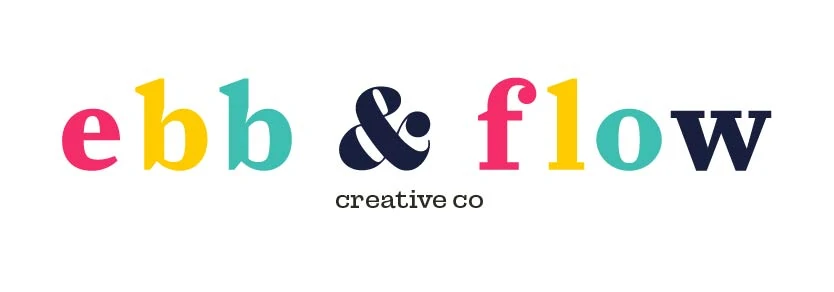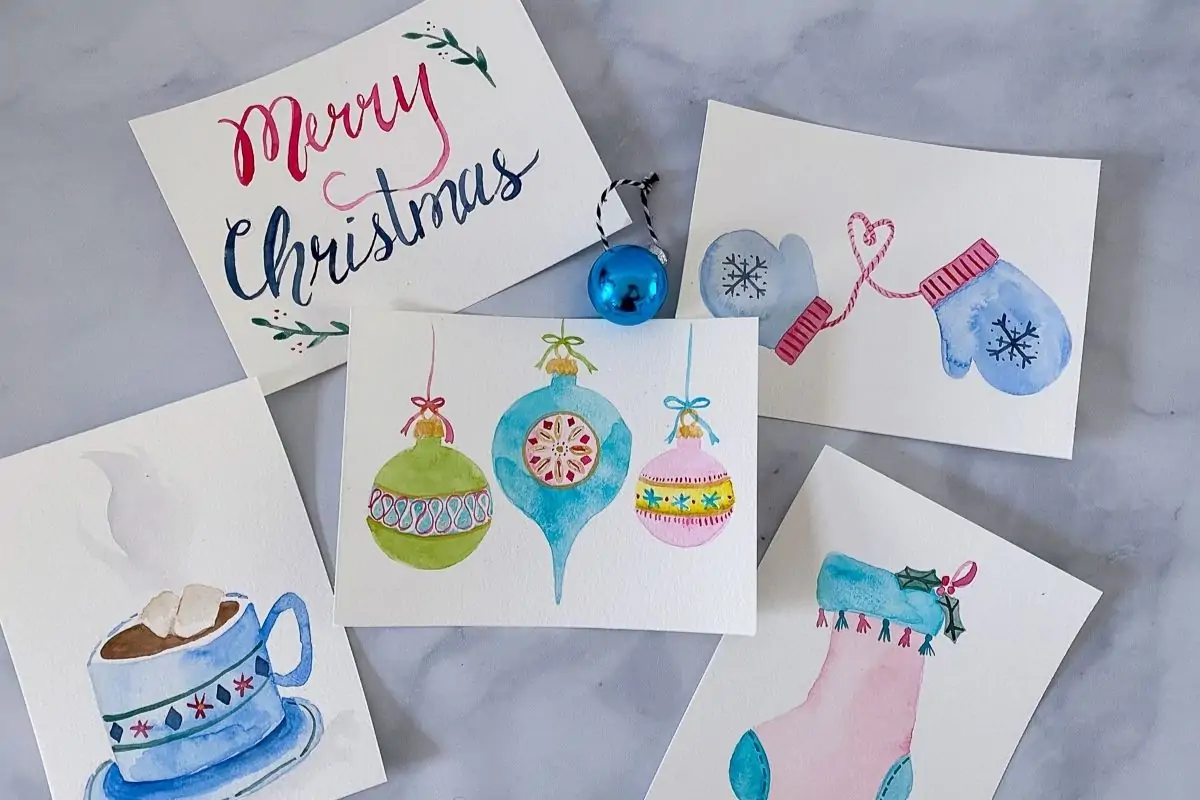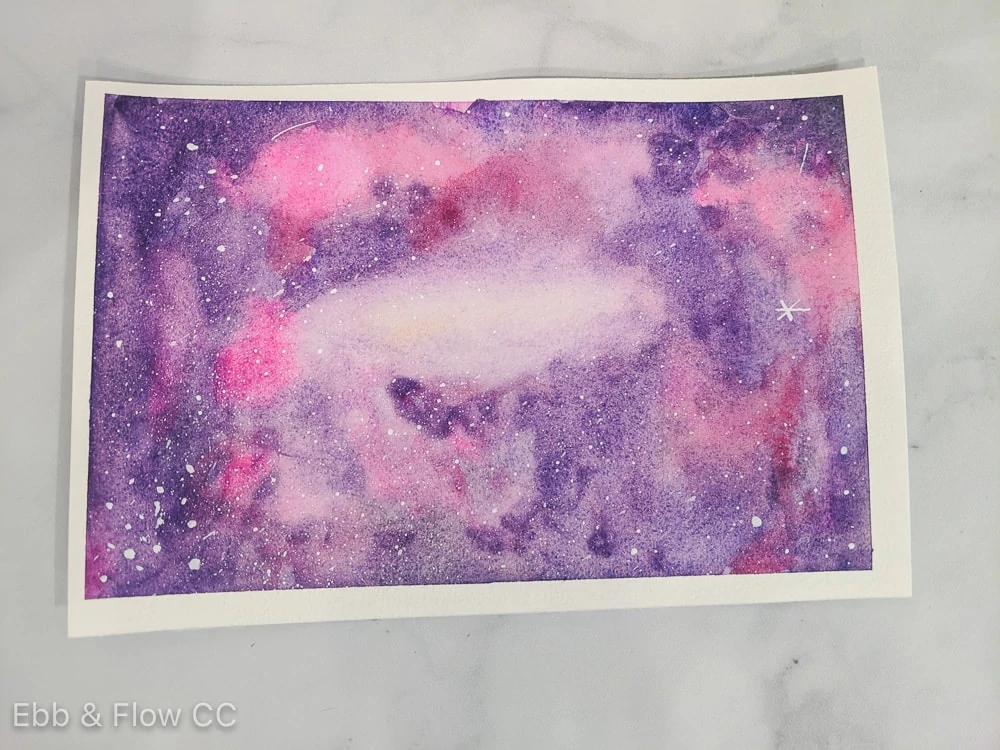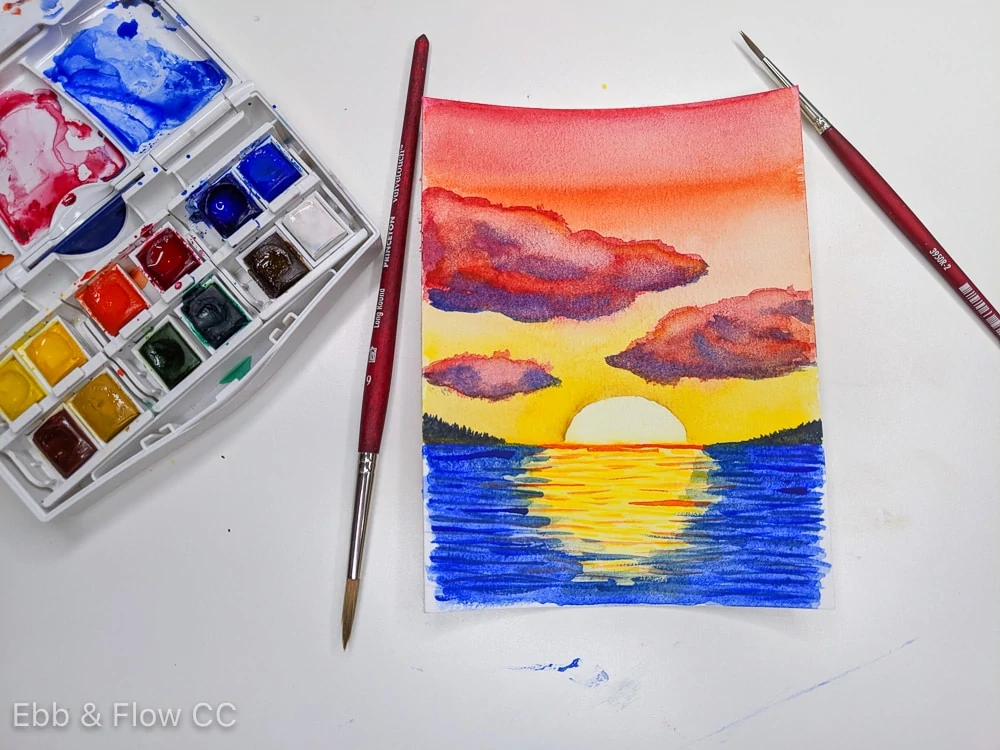How to Mix and Blend Watercolor Pencils
Learn how to mix and blend watercolor pencils. Use these easy techniques with watercolor pencils to create beautiful art.
You might also like these watercolor tutorials.
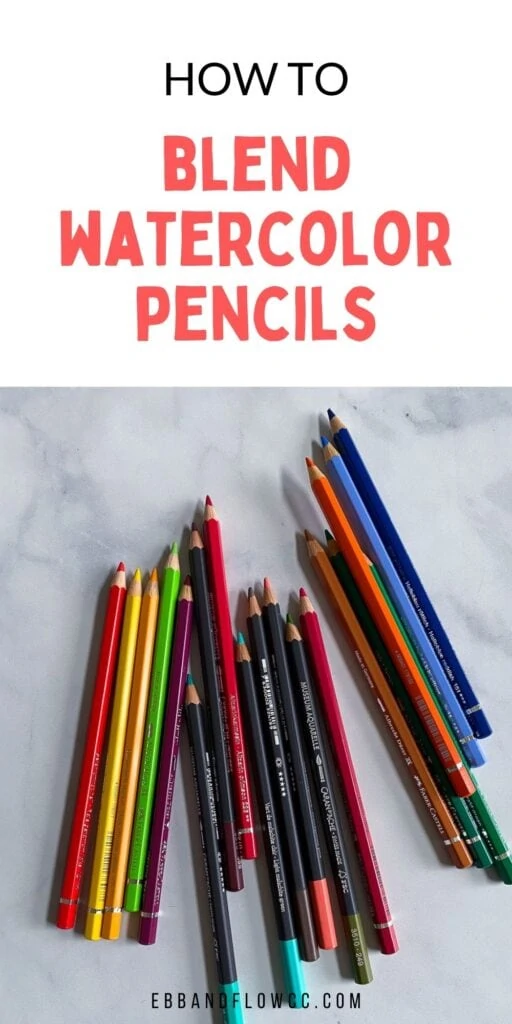
This post contains affiliate links. By purchasing an item through an affiliate link, I earn a small commission at no extra cost to you. As an Amazon Associate I earn from qualifying purchases.
If you’re used to colored pencils, blending watercolor pencils can be a bit confusing. When you blend colored pencils, you use the pencil itself to burnish the colors together.
For watercolor pencils, you use water with a few easy techniques.
Get more tips for using watercolor pencils here.
How to Mix and Blend Watercolor Pencils
For reference, I’m using Faber-Castell Albrecht Durer watercolor pencils and Caran Dache Museum Aquarelle pencils.
Both are really nice quality pencils and the colors dissolve in water better than cheaper brands.
It’s always worth buying the best quality art supplies that you can afford. When they work better, they’re easier to learn.
It’s not necessary to buy big sets though. Buy open-stock pencils in the colors that you like, rather than having a set of pencils where you only like 6 of the colors.
I’m using cheap watercolor paper. It stands up to the amount of water without buckling, but it’s not so expensive that it hurts to use it.
Layer Colors
Layering colors is a great way to mix colors.
Simply color with one color and color over the same area with another color. When water is added, the colors mix to create a new color.
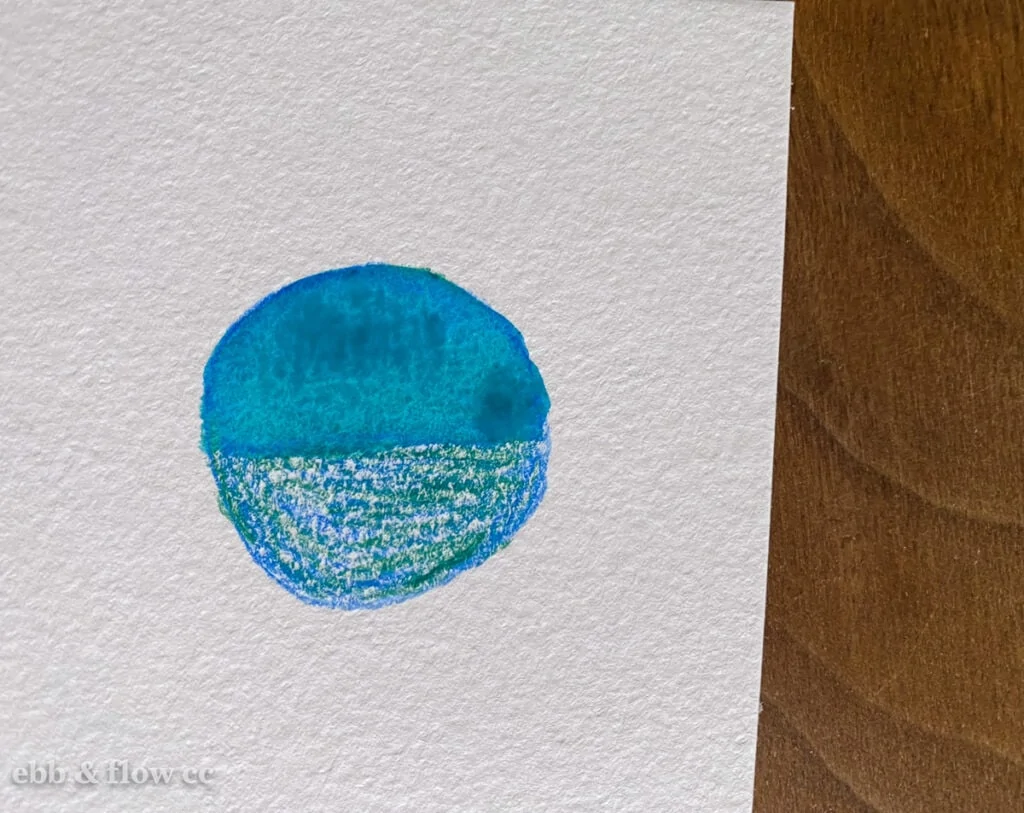
Layering the colors in different amounts can result in different colors. In the example below, the first swatch is colored with red with a small amount of yellow to make an orange color.
The 2nd swatch was colored with yellow and a small amount of red to make a warm yellow-orange color.

Keep in mind that some colors are stronger than others and the weaker color might need more added to compensate.
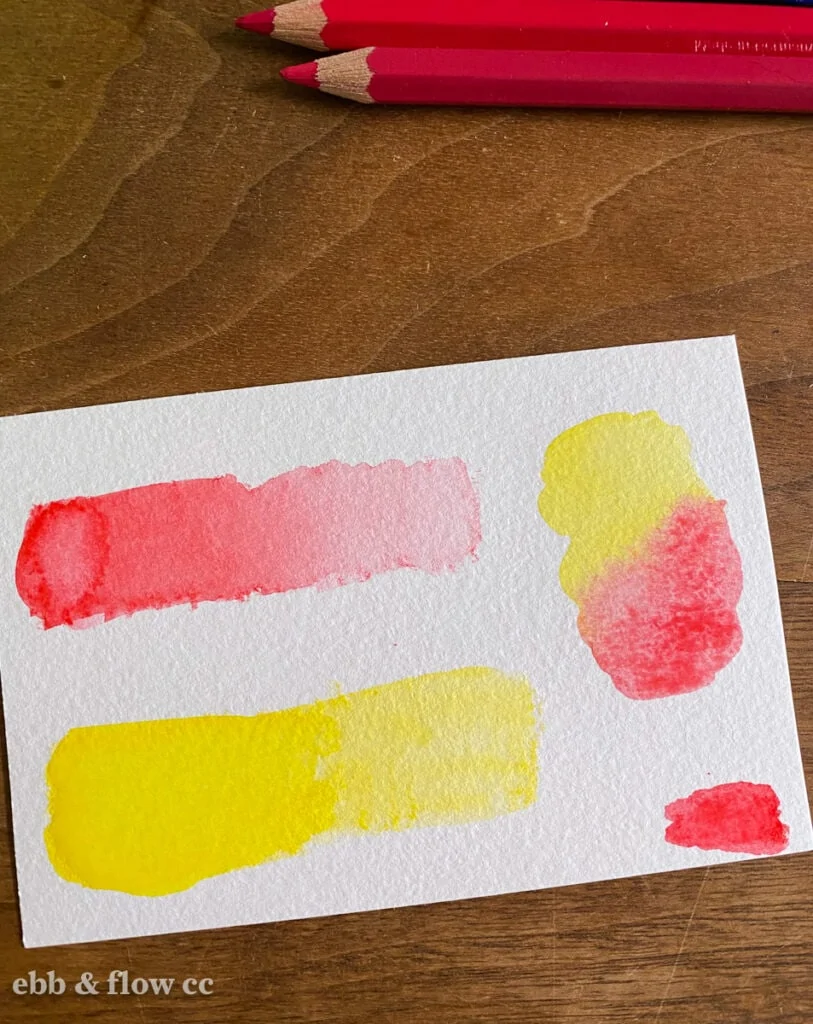
For instance, when mixing red and yellow to make orange, red is a very strong color and yellow is a weak color. Use less red and more yellow to allow the yellow to show up.
Keep color theory in mind when layering colors. If you combine complementary colors, they will create a brown color.
The example below combined red and green to make an interesting reddish-brown color.
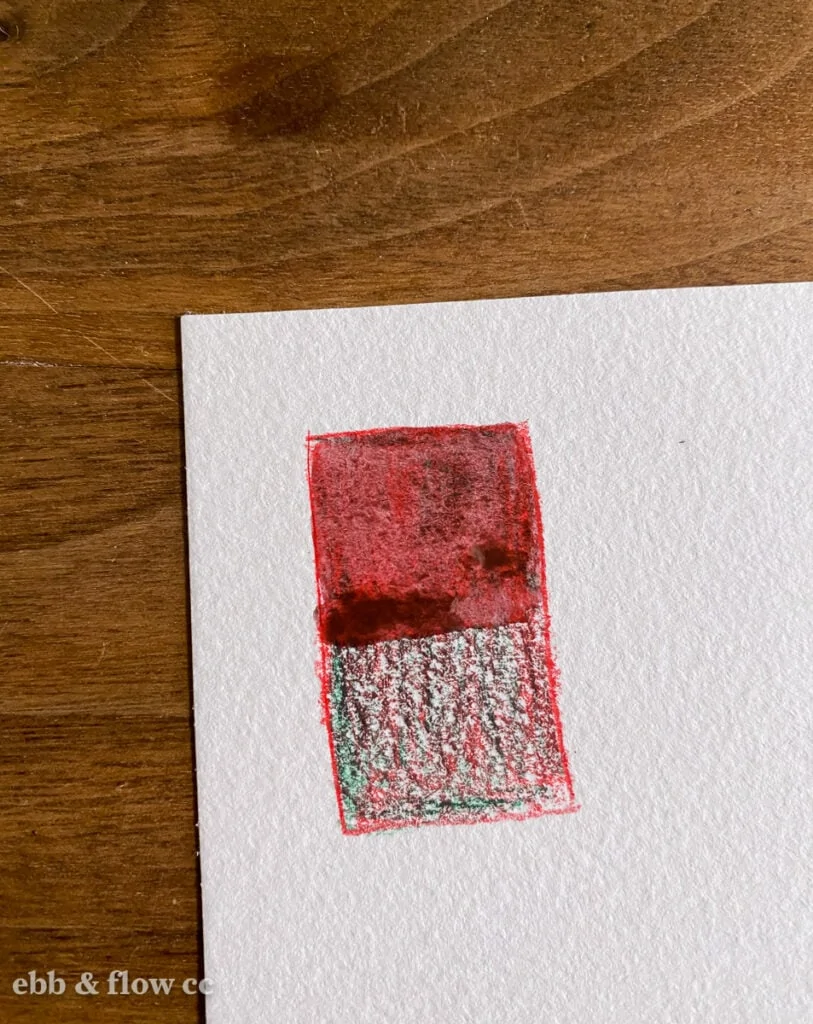
Adding a tiny bit though can create a muted version of the color.
It’s a little hard to tell, but the top swatch has a bit of green added that makes the red not as bright as the bottom swatch.
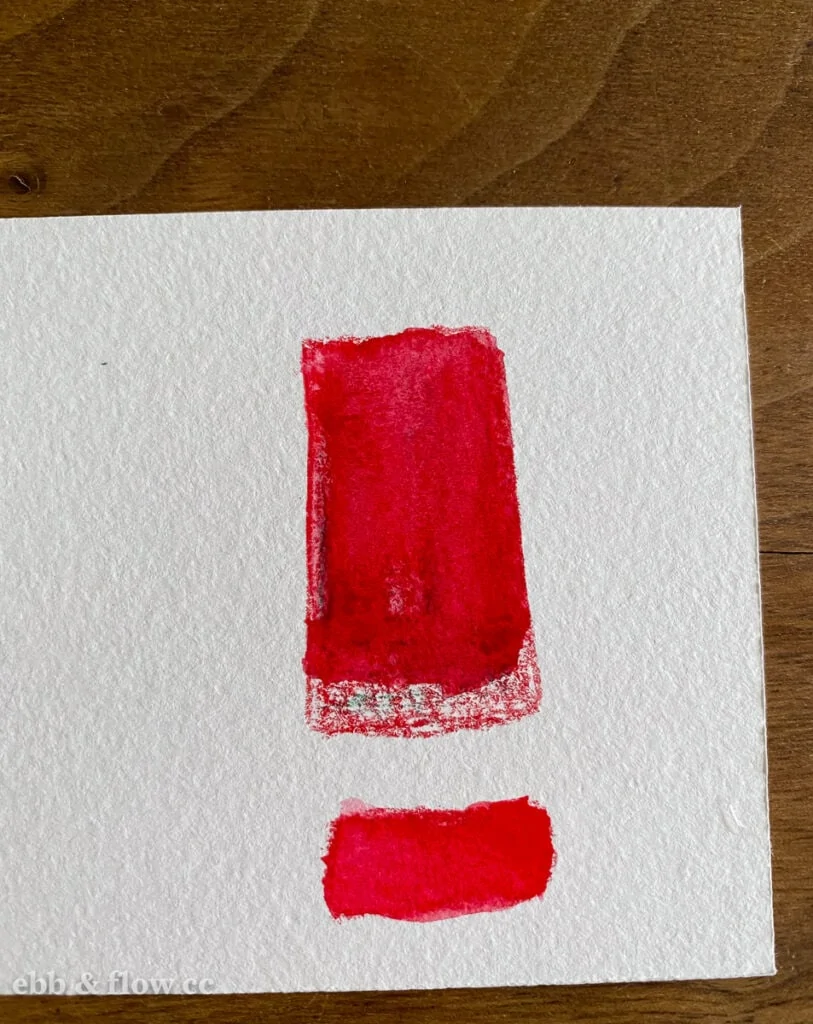
To create pastel versions, color lightly. You can also color around the edges and use a wet paintbrush to work the lighter color to the middle.
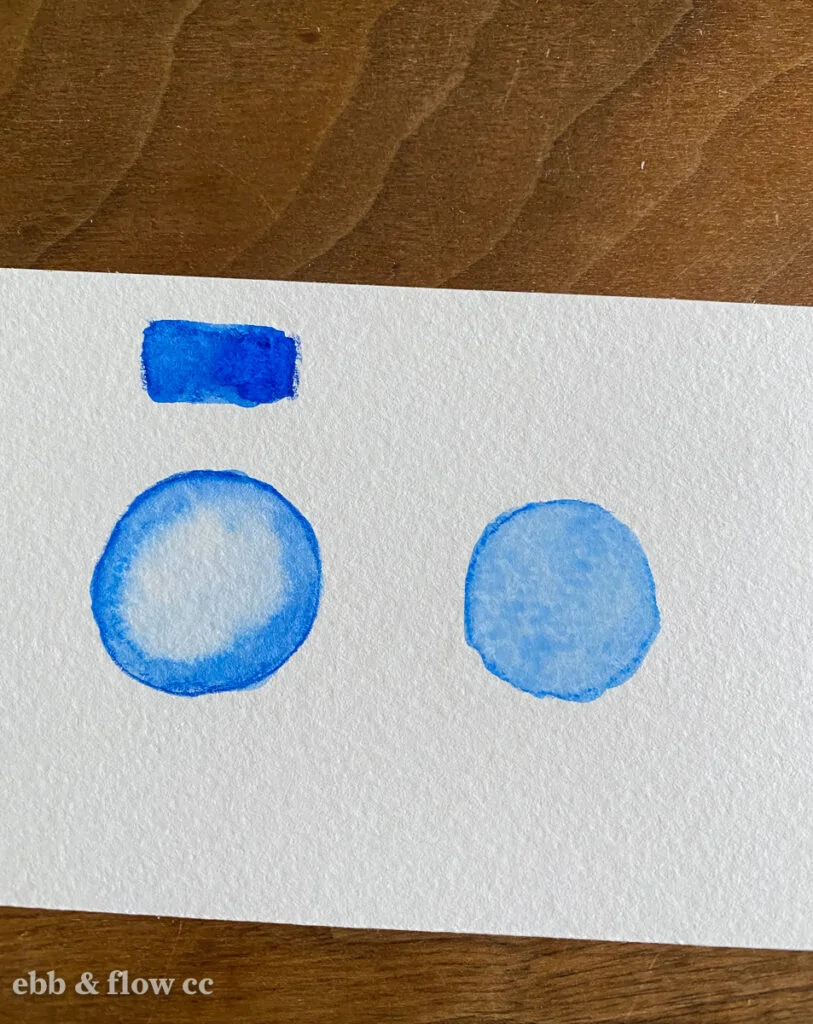
Create Gradients
Another way to blend colors is to create gradients.
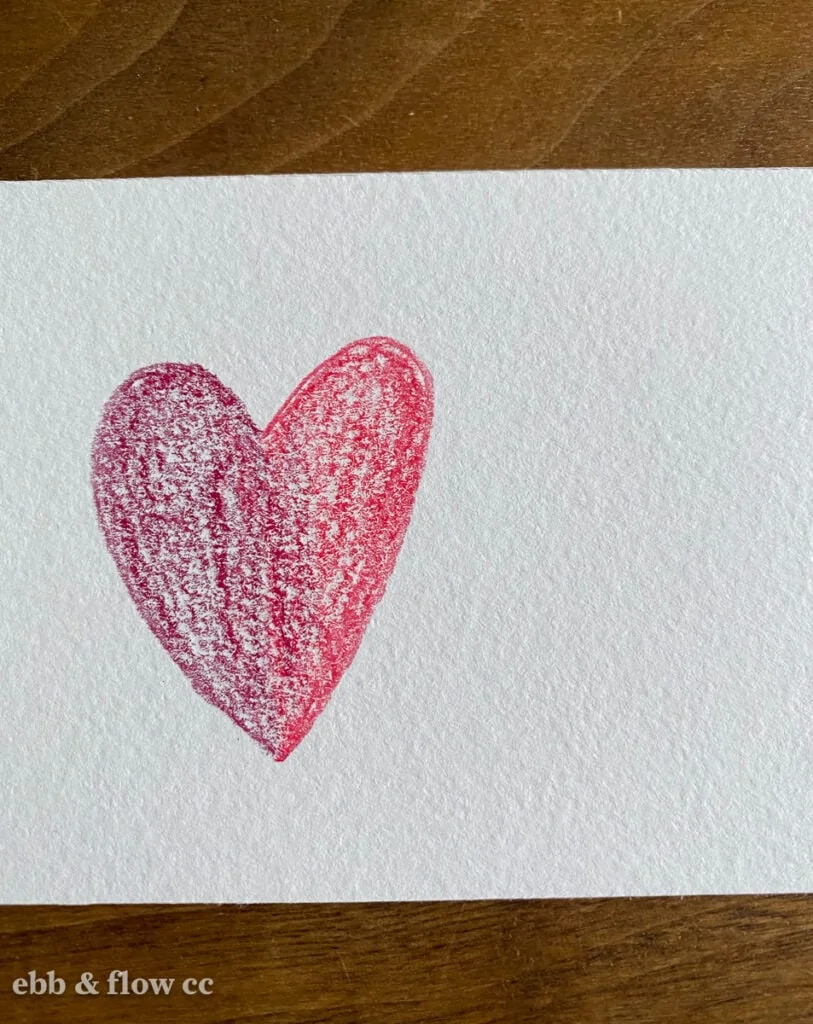
Choose 2 or more colors and apply them next to each other, overlapping a bit where they meet. When water is added, you will get a seamless transition between the colors.

Use a Colorless Blending Marker
A colorless blending marker is great for using in small areas or for details where a paintbrush might be difficult to use.
Colorless blender markers are made with water and glycerine. (Don’t use an alcohol-based blender marker because it won’t work as well.)
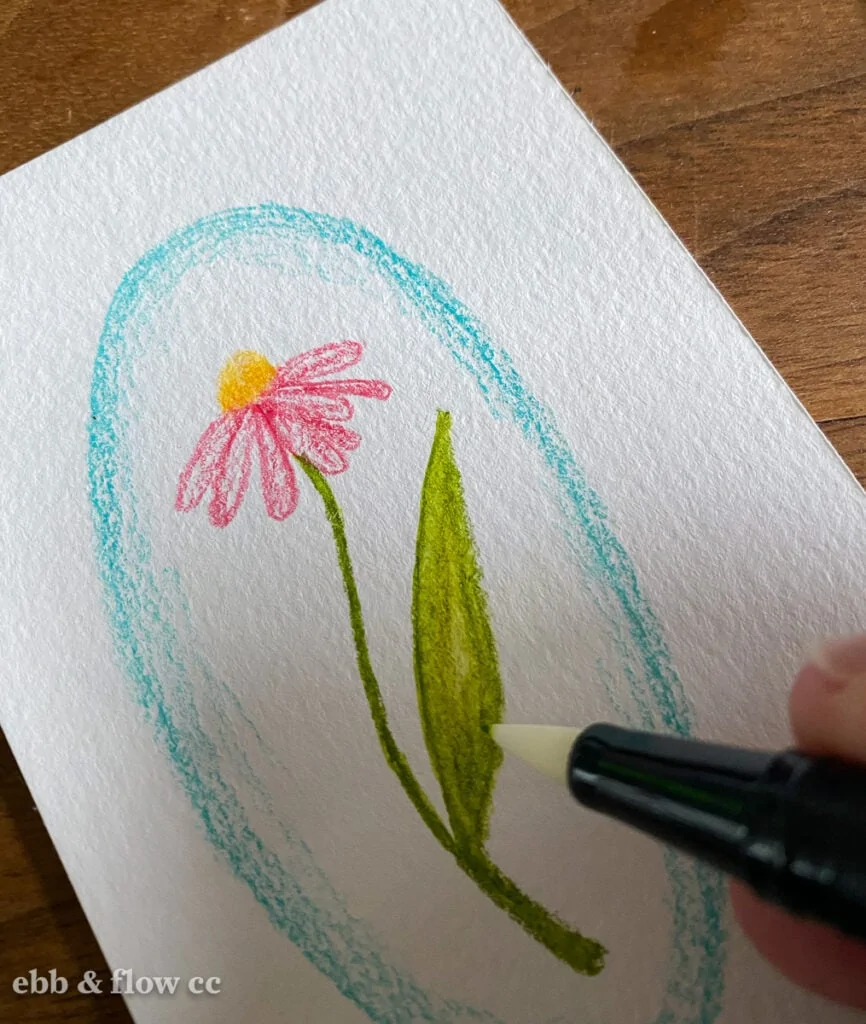
Color as usual with the watercolor pencils and then use the blending marker.
If the tip gets dirty, scribble on a sheet of scrap paper until it’s clean again.
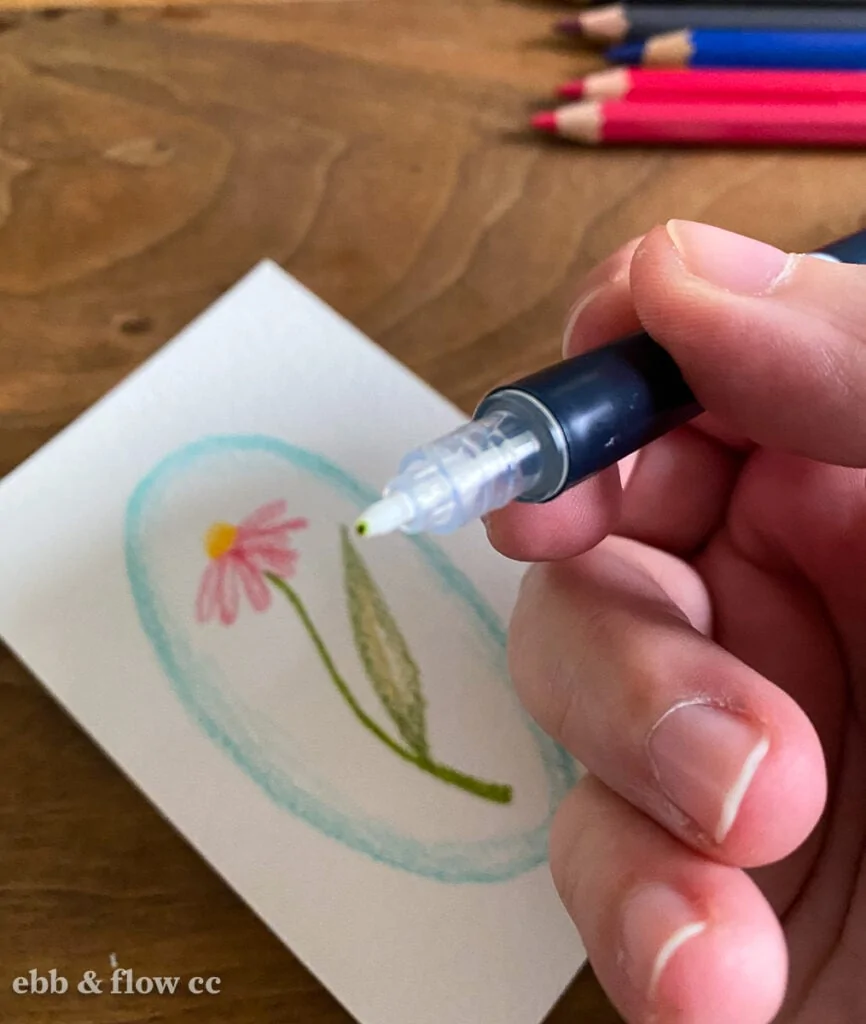
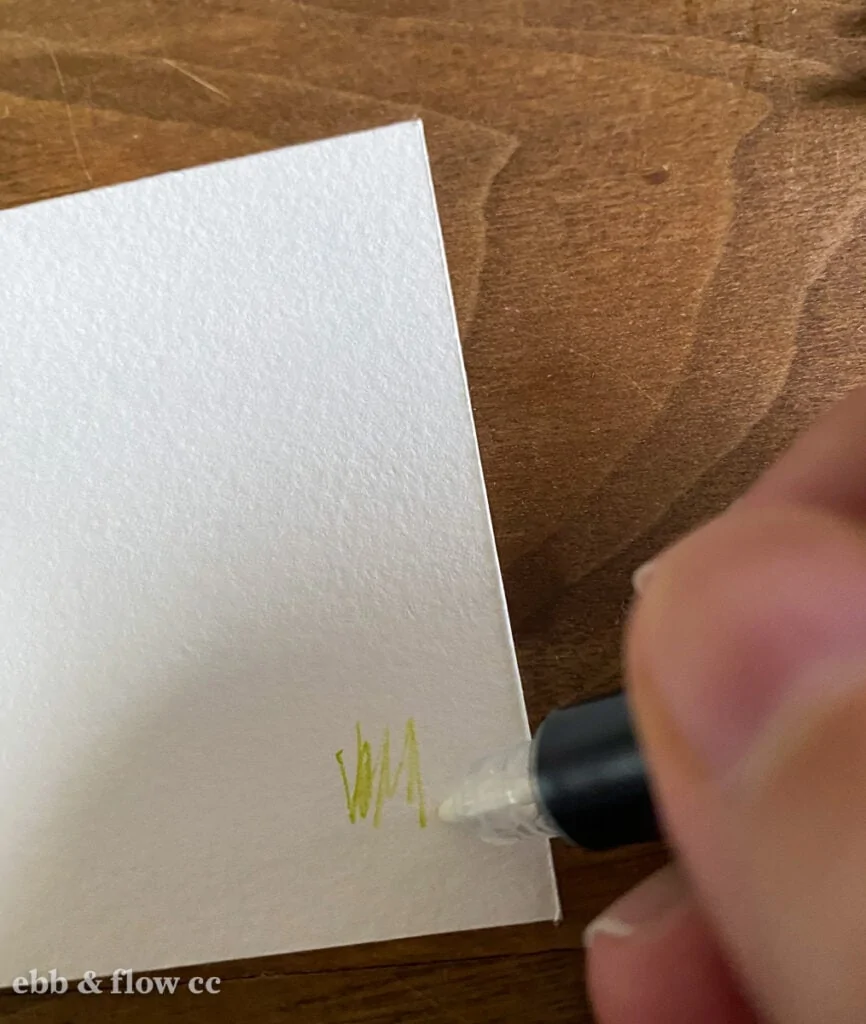
You can also touch the blending marker to the tip of the pencil and color with the marker. This adds concentrated color to the painting and is great for shading.
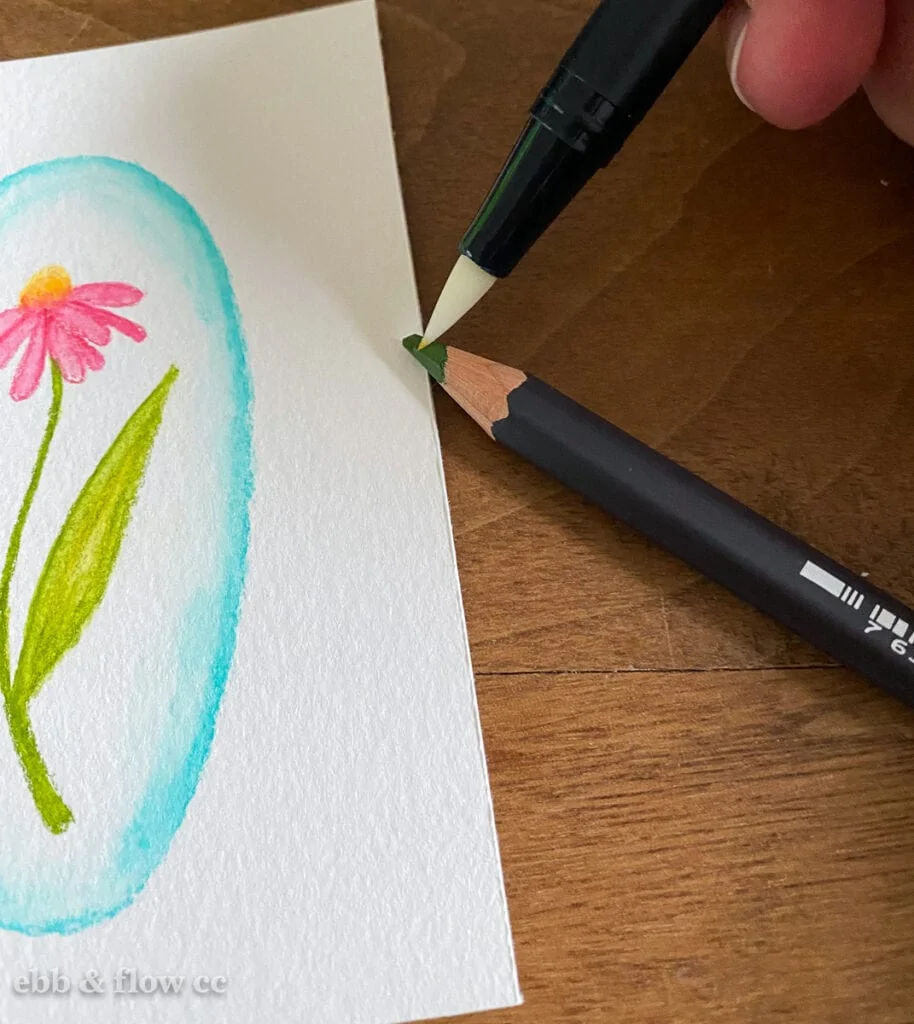
The oval around the flower was colored lightly and blended out with water for a soft look.

Tips for Blending Watercolor Pencils
- Keep color theory in mind when combining colors. Analogous colors tend to blend together better.
- While working, keep scrap paper handy for swatching colors.
- Coloring lightly can help to reduce visible lines. (Using better quality pencils also helps with this.)
- You can add layers. Color and add water as usual. Let dry and then add another layer. This is great for adding shadows or details.
You Might Also Like:
Pin for Later!

